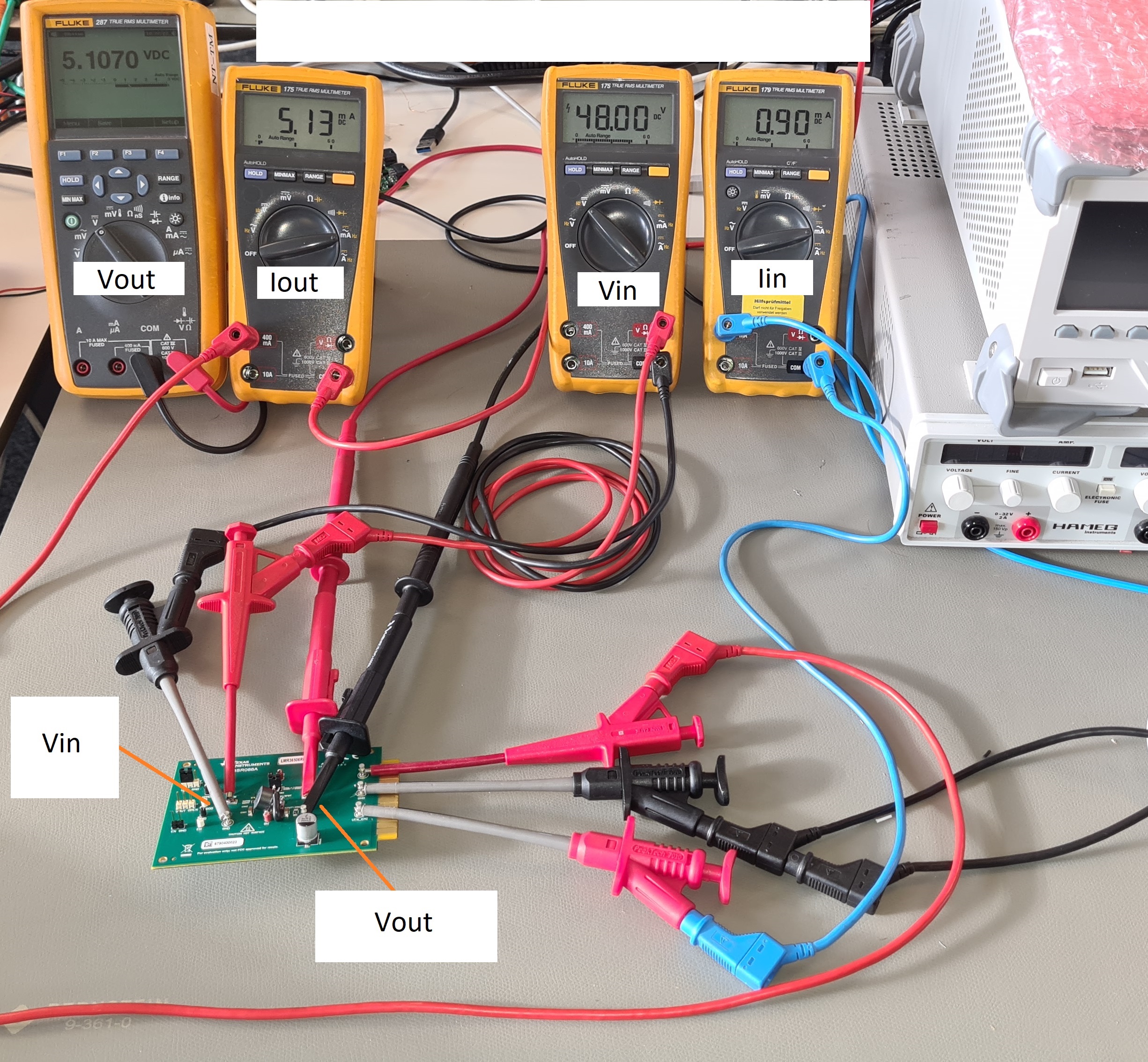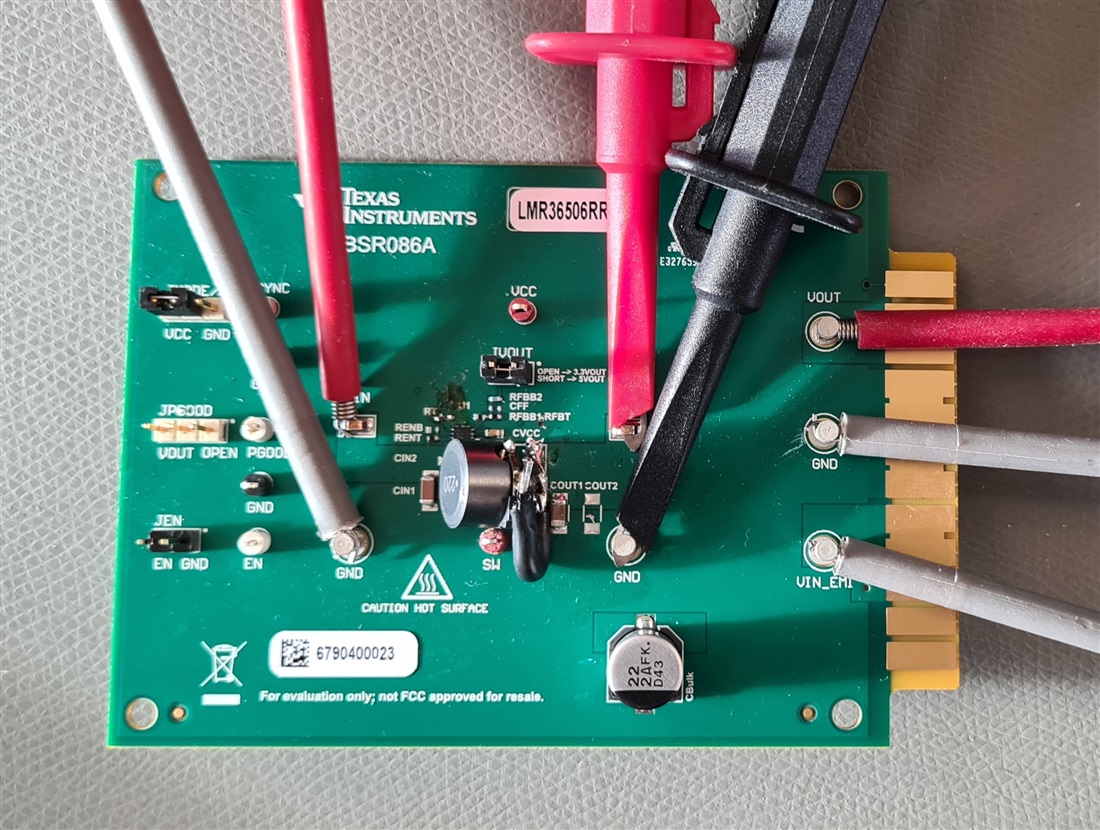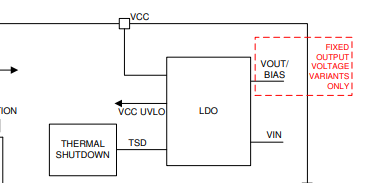Hi,
Our customer has been measuring LMR36506RREVM and cant get to the efficiencies advertised on the Datasheet.
Blue point below are the measured points.
What do they need to do, to be able to measure the curve in the data sheet? For them, the efficiency in the yellow marked range (10-30mA out) at 48V input voltage is particularly important.
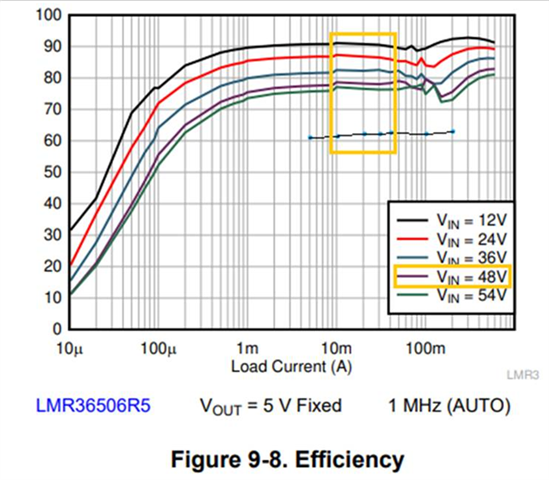
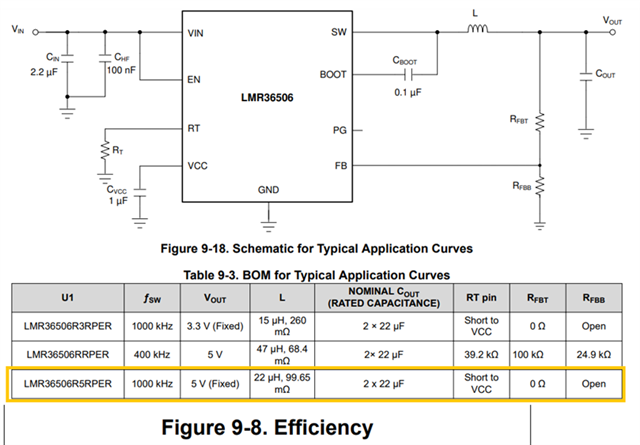
Regards,
Gokhan


